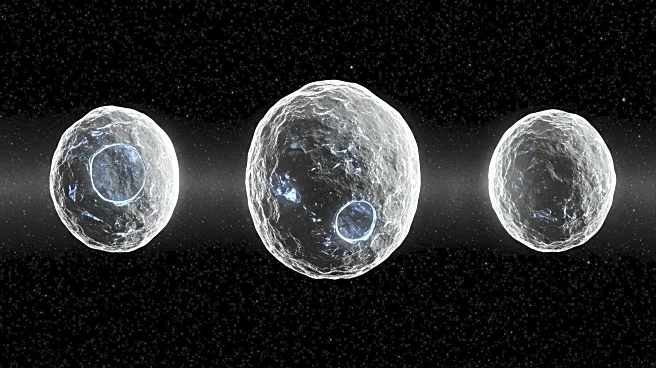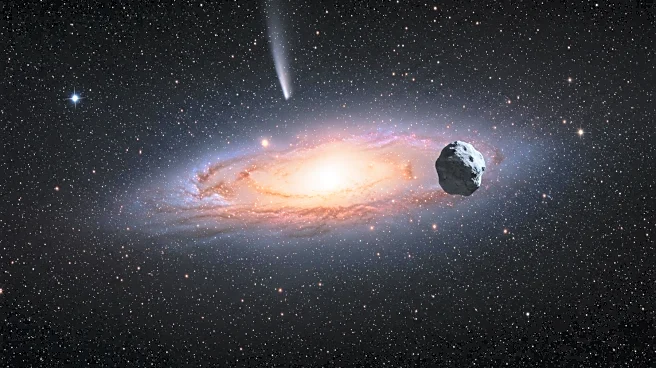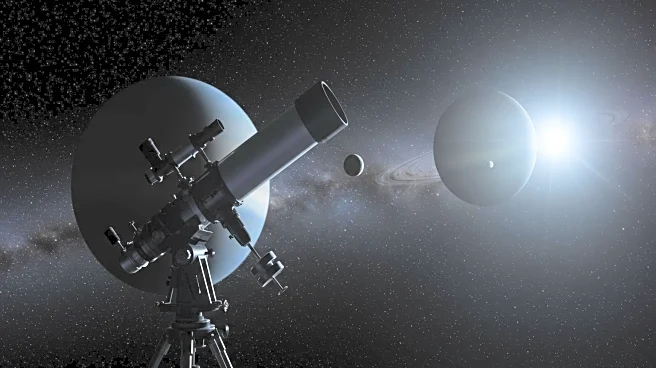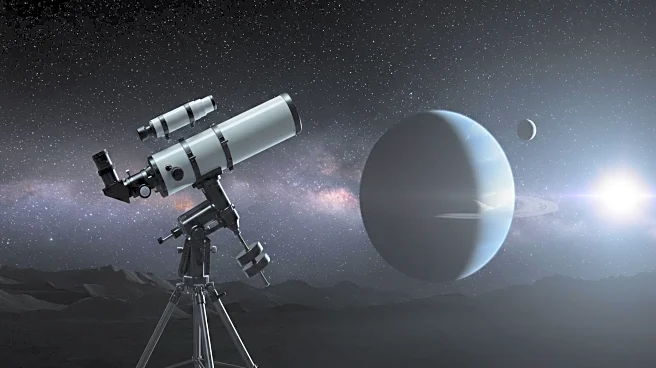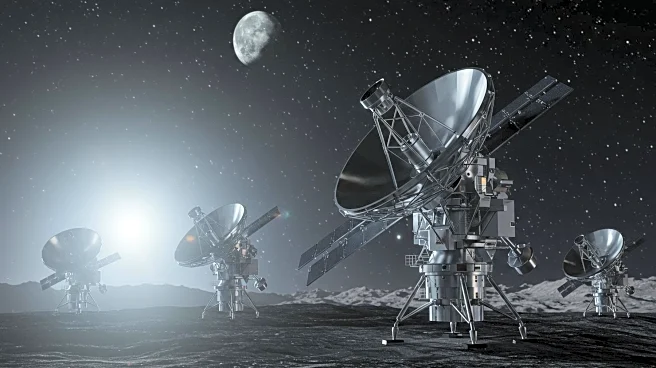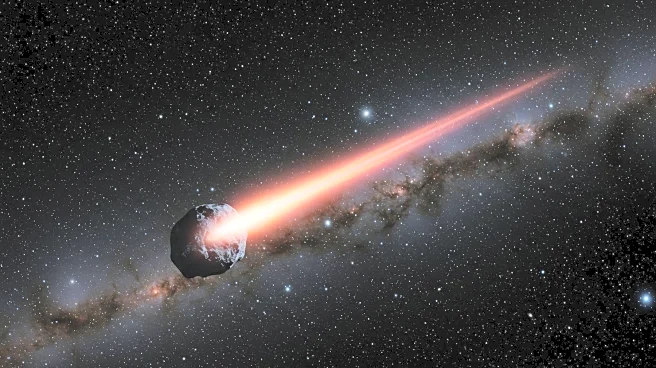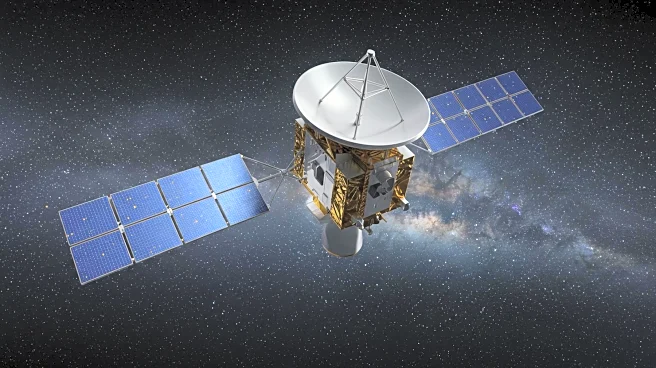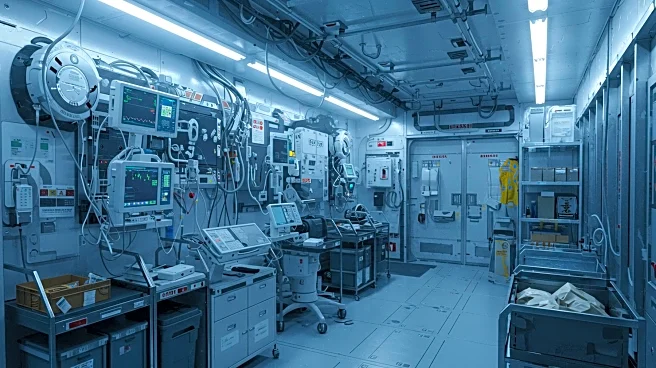What is the story about?
What's Happening?
A recent study published in the Planetary Science Journal suggests that asteroids Bennu, Ryugu, and Polana may originate from a single parent body. Researchers utilized the James Webb Space Telescope to analyze Polana's near-infrared spectral data, comparing it with Bennu and Ryugu, previously studied by NASA's OSIRIS-REx and Japan's Hayabusa2 missions. The study posits that these asteroids are remnants of a massive collision early in the solar system's formation, with Polana being the largest surviving fragment. Differences in solar radiation exposure and micrometeoroid impacts have led to varied surface evolution among these asteroids.
Why It's Important?
Understanding the shared origins of Bennu, Ryugu, and Polana provides insights into the solar system's formation and evolution. This research could influence future asteroid exploration missions, offering clues about the materials and conditions present during the early solar system. The findings may also impact planetary defense strategies, as knowing the composition and behavior of these asteroids can aid in developing methods to mitigate potential threats. Additionally, the study enhances our understanding of asteroid families, which could have implications for mining and resource utilization in space.
What's Next?
Further research may focus on detailed spectral analysis of other asteroids to identify additional members of this potential asteroid family. Scientists might also explore the implications of these findings for asteroid mining, considering the shared composition could indicate valuable resources. The study could prompt new missions to these asteroids, aiming to collect samples and conduct in-depth analysis to confirm the shared origin hypothesis. Collaboration between international space agencies may increase to leverage combined expertise and technology for future exploration.
Beyond the Headlines
The study raises questions about the ethical and legal aspects of asteroid mining, as understanding the origins and compositions of these bodies could lead to increased interest in exploiting their resources. It also highlights the importance of international cooperation in space exploration, as shared knowledge and technology can enhance scientific discoveries. The research may influence educational programs, encouraging a new generation of scientists to explore planetary science and astrobiology.
AI Generated Content
Do you find this article useful?
